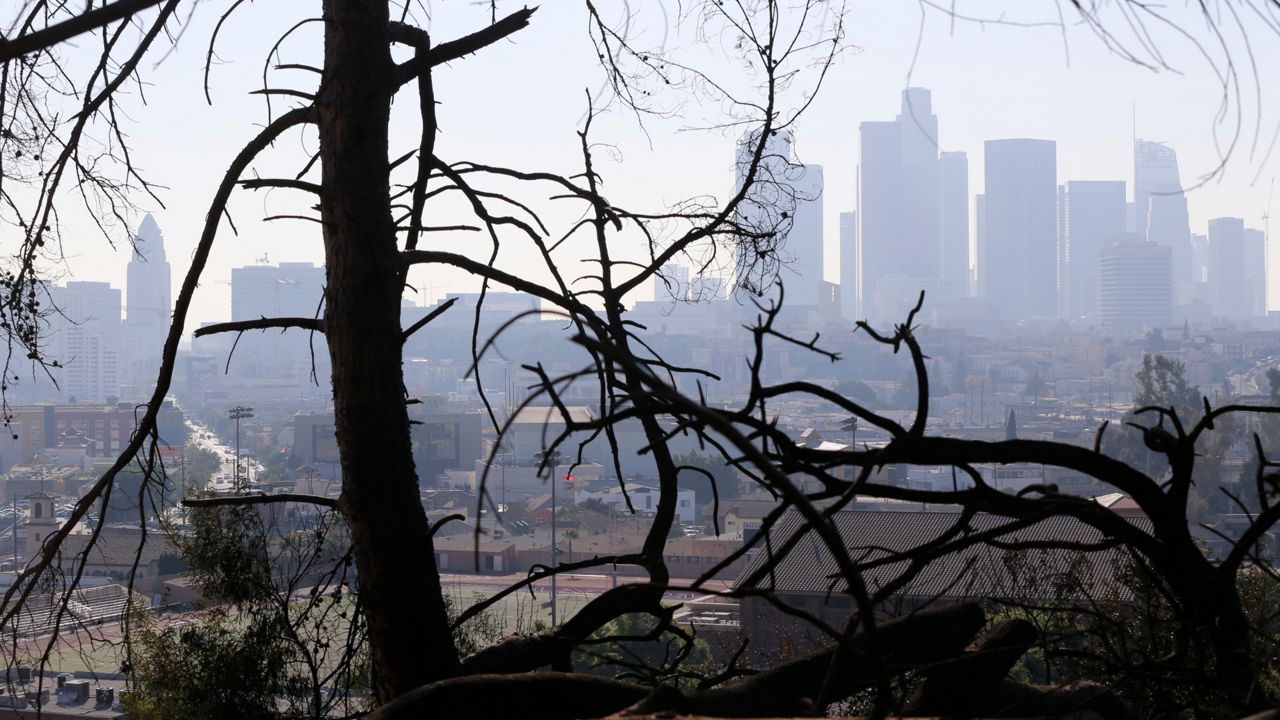LOS ANGELES — The last time Southern Californians experienced extreme drought conditions and were asked to conserve water, they heeded the call. Whether it was taking shorter showers or foregoing car washes, Angelenos reduced their daily water consumption from 156 gallons per day in 2006 to 106 a decade later. But there was a downside.
“Urban arborists saw the unintended consequence of tree deaths,” Los Angeles City Forest Officer Rachel Malarich said Tuesday, during an online event about growing community resilience when drought is the new normal. “It is not either we conserve water or we preserve trees. It absolutely must be both.”
According to the LA County Tree Canopy Assessment released earlier this year, every neighborhood in the city of Los Angeles has experienced a 10-year canopy reduction of 14 to 55%. Part of the problem is that current funding programs too often focus on purchasing and planting trees rather than maintaining the city’s urban forest, the assessment found.
Figuring out how to water and preserve trees as the climate warms is becoming increasingly important as the city works to attain the goals LA Mayor Eric Garcetti set out in his Green New Deal. While one of those goals is planting 90,000 new trees citywide and increasing tree canopy in areas of greatest need by at least 50% by 2028, another target seeks to reduce water usage to 103 gallons per person by 2025 and to 100 gallons per person by 2035. Angelenos currently use 113 gallons per day.
“We know limited water is a reality we must take seriously,” Malarich said, adding that the city is still working on a plan to navigate the dynamics between trees and water in times of drought at the same time it strives to plant thousands of trees in disadvantaged communities.
Saving trees is important, she said, because they are a valuable part of the urban infrastructure that increases in value over time. They help cool the city, provide shade and improve residents’ physical and mental health. They also play a critical role in air quality, as well as water quality, storm water capture and flood prevention because of their roots’ ability to slow and spread water when it falls.
Urban trees need soil, air, sunlight and water to survive, but it’s water that’s in short supply. Ninety percent of the state is in extreme or exceptional drought, according to the October U.S. Drought Monitor, and the Colorado River Basin that supplies 25% of the region’s water is experiencing its first-ever shortage.
“Drought effects on trees last a very long time,” said Henry Herrera, Cal Fire’s regional urban forester for Los Angeles and Ventura counties. “Some trees are able to recover if eventually they receive enough water, but we need consecutive wet winters to come out of a drought.”
Consecutive wet winters seem unlikely in the near term. Some scientists believe Southern California is experiencing the beginnings of a decades-long megadrought. According to the California Department of Water Resources, 2021 is the second driest year in the state’s history.
Trees can’t wait for a respite from drought, Herrera said. They just won’t survive unless they are watered in a way that does not involve rain falling in the place where they are growing. Trees that are less than 3 years old need to be watered two to four times per week with five gallons of water each time, he said; mature trees need to be watered one to two times per month for up to 24 hours.
If that sounds like a lot of water, it is, but Herrera said the cost of removing a dead mature tree could cost more than watering it.
Counterintuitive as it may seem at a time when Angelenos are being asked to turn off their taps, “during a drought you should water your tree,” said Ben Carlson, spokesman for Friends of the Urban Forest. His group advocates for prioritizing trees over other greenery when watering and to water big trees as well as small ones.
For its part, LADWP is encouraging its 4 million customers to “maintain tree health within gardens and yards,” said the agency’s head of water conservation policy, Terence McCarthy.
LADWP has been abiding by two emergency water conservation ordinances since the city last experienced a severe drought in 2009. Under those ordinances, residents are limited to three days of outdoor watering per week that must happen before 9 a.m. or after 4 p.m., though the rule does allow for hand watering at any point between 9 a.m. and 4 p.m. as long as it’s done with a self-closing nozzle, McCarthy said.
The city’s multi-agency message to simultaneously save water and trees came on the same day the Metropolitan Water District of Southern California declared a regional drought emergency that called on member agencies, including LADWP, to review the adequacy of their drought response measures and to immediately implement conservation requirements. Already, the state is under a drought emergency declaration that is requesting voluntary water consumption reductions of 15%.



